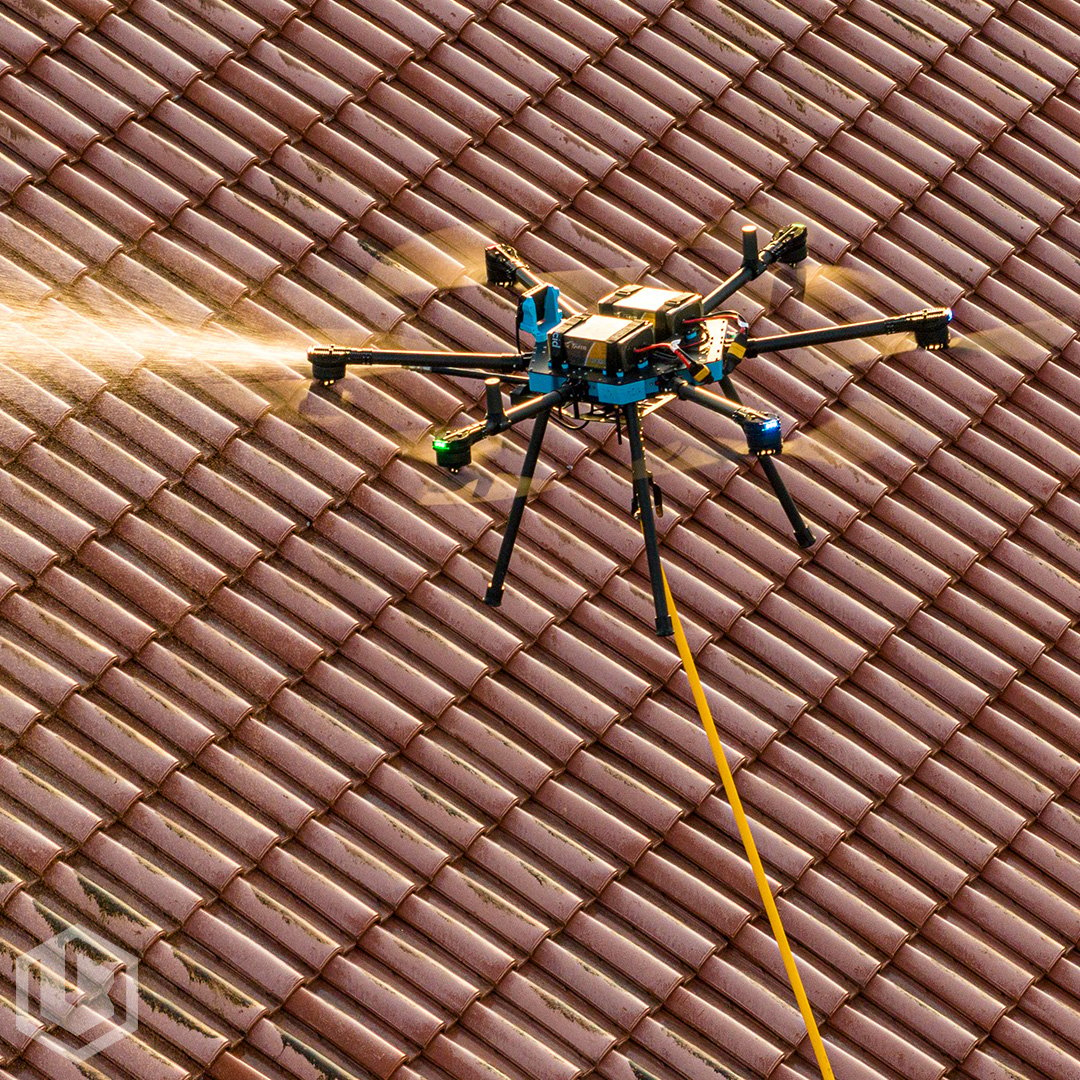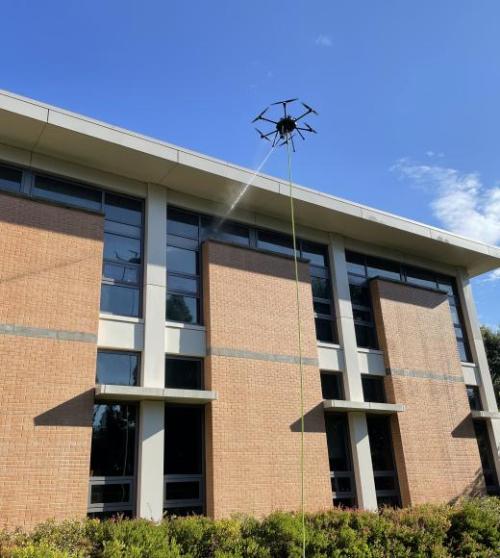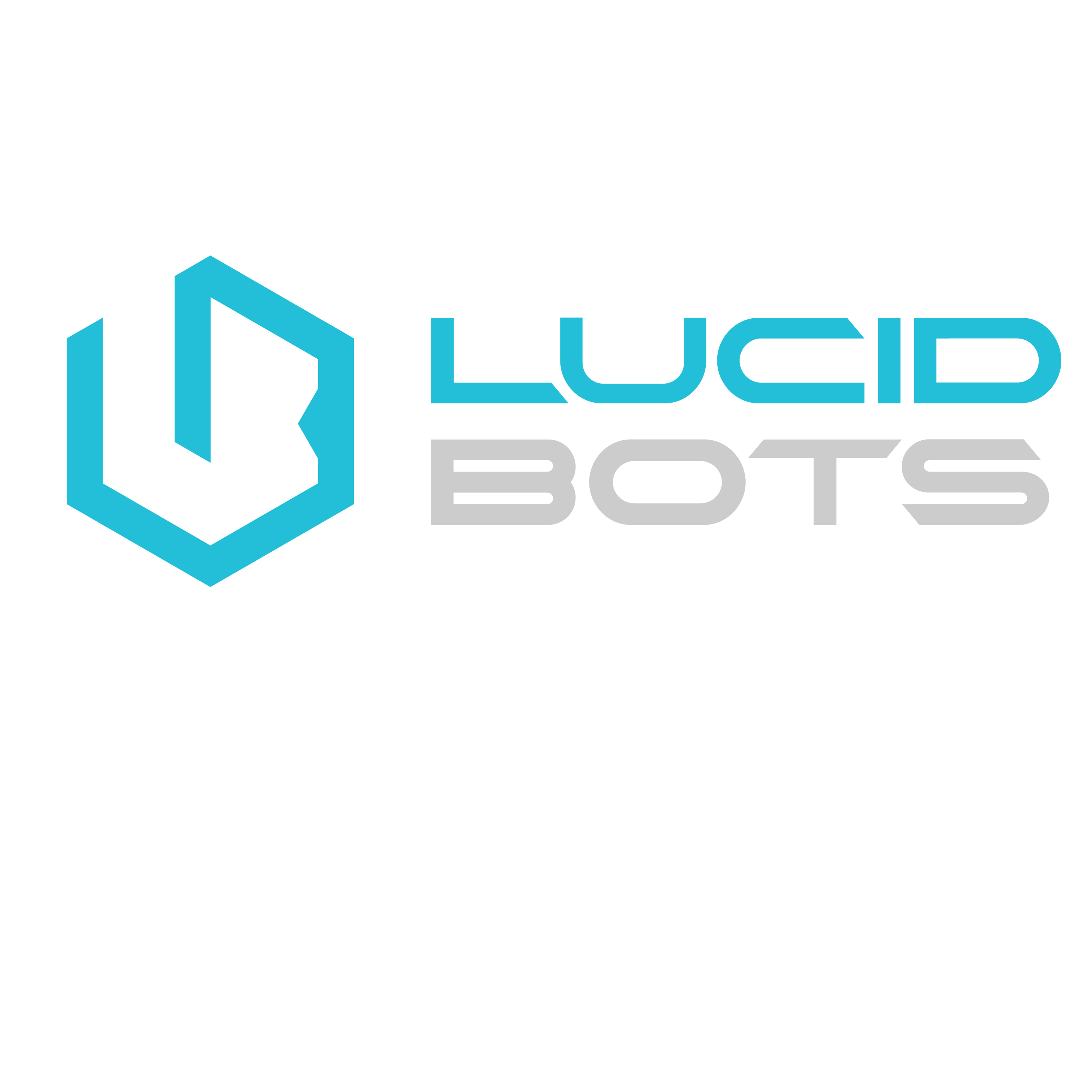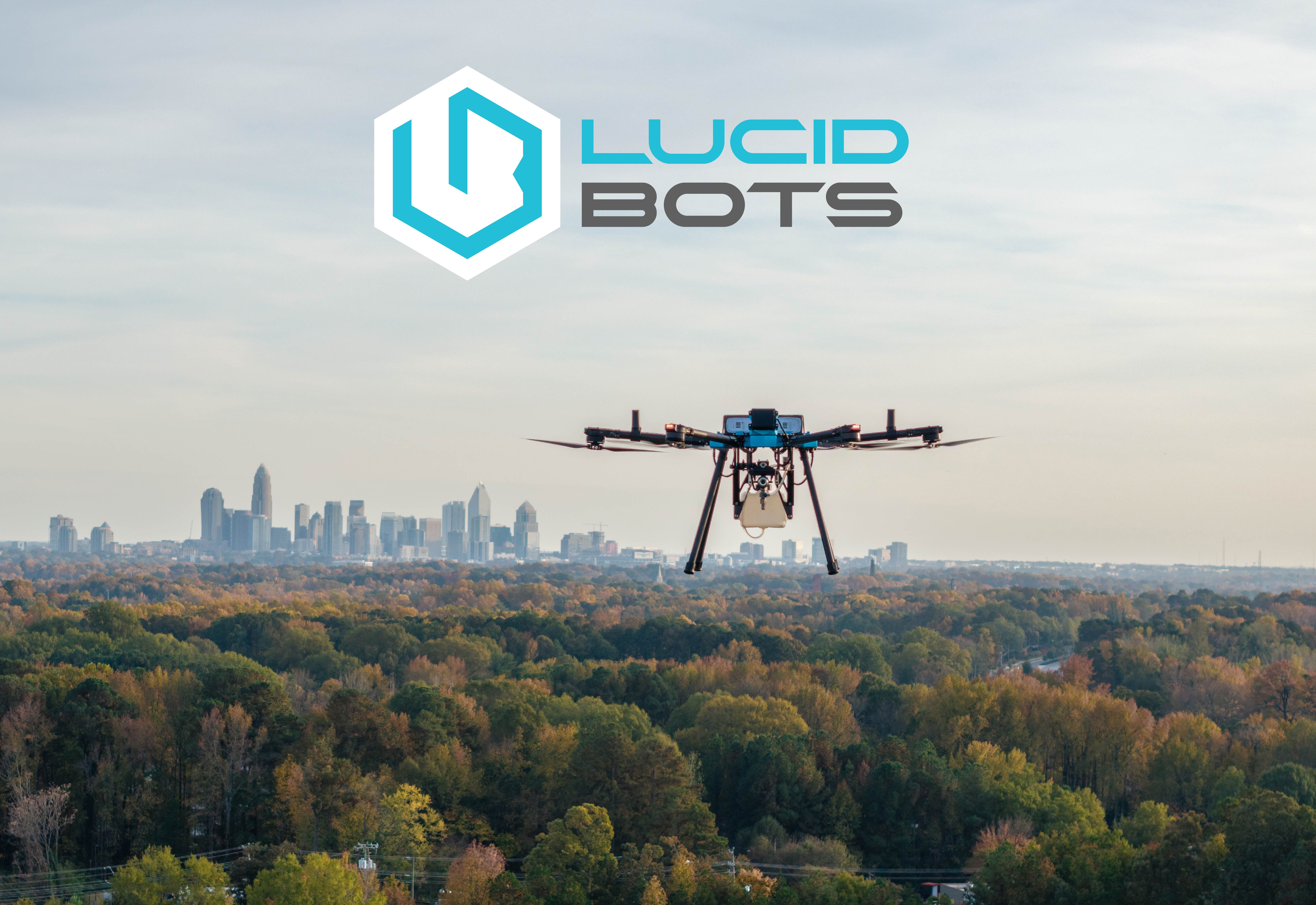6 min read
Revolutionizing Businesses with Drones: Cutting-Edge Applications Across Industries
Lucid Bots : Nov 3, 2024 9:42:58 AM

In today’s business landscape, facility maintenance and property management have undergone a profound transformation. What once involved basic building upkeep and real estate oversight has expanded into a multi-faceted discipline. Modern facility management (FM) now includes services essential to the smooth operation of organizations, from universities and healthcare to sports arenas and complex built environments.
Beyond traditional responsibilities, FM now emphasizes sustainability, asset management, and even employee well-being. As businesses evolve, effective project management and fire safety protocols have also become integral components, ensuring safety, productivity, and efficiency.
Selecting the right facility management services is critical. Organizations require customized approaches to meet their unique needs—whether it's energy management for sustainability initiatives or space planning for growing businesses. The impact of these services goes beyond operational efficiency, contributing directly to bottom-line results.
According to McKinsey & Co., companies are increasingly outsourcing facility management, and the global market is expected to reach $1.9 trillion by 2024. This surge highlights the growing demand for innovative solutions that streamline processes and reduce costs.

Source: McKinsey & Co.
In this article, we’ll explore how technology is reshaping facility management, focusing on the revolutionary use of drones and other smart solutions. We'll spotlight tools like Sherpa Drones for aerial inspection and Lavo Bots for pressure washing, revealing how these innovations drive operational excellence.
The Role of Technology in Facility Management
Technology has become a game changer in facility management, enhancing operations with cost-effective, efficient tools. Modern FM leverages software like Computer-Aided Facility Management (CAFM) and Integrated Workplace Management Systems (IWMS) to streamline day-to-day activities. Real-time remote monitoring now allows facilities managers to respond proactively, reducing downtime and preventing costly repairs.
According to the International Facility Management Association (IFMA), smart technologies can lead to 15% reductions in energy consumption, demonstrating the financial and environmental benefits of technological integration.
To further highlight the transformative impact of technology on facility management (FM), here are additional sources and points:
-
Automation and Robotics: The adoption of automation and robotic solutions, such as autonomous cleaning bots and drones, has further streamlined operations, reducing the need for manual labor in repetitive tasks. According to the International Data Corporation (IDC), the global spending on robotics and drones is expected to reach $210 billion by 2025, driven by industries looking to improve operational efficiencies. Automated systems can help reduce labor costs and increase productivity, especially in high-traffic areas requiring frequent cleaning and upkeep.
-
Predictive Maintenance with IoT: IoT-enabled devices are revolutionizing predictive maintenance, allowing facility managers to address equipment failures before they occur. By tracking and analyzing data in real time, facility managers can reduce downtime and extend the life of key equipment. The McKinsey Global Institute reports that IoT-driven predictive maintenance can lower maintenance costs by up to 25% and decrease unexpected equipment failures by almost 70%, directly impacting operational efficiency and cost savings.
-
Energy Management Systems (EMS): Many modern facilities now use advanced EMS, which leverage IoT and data analytics to optimize energy consumption and reduce waste. According to a report by the U.S. Department of Energy, facility-wide EMS can reduce energy use by up to 30%. This is especially beneficial for large commercial buildings, where energy consumption is a significant operational cost.
-
Data-Driven Decision-Making: Facility management platforms now include data analytics, which allows managers to make informed decisions on resource allocation, preventive maintenance, and overall efficiency improvements. For example, data analytics can identify underutilized spaces, which could lead to space repurposing or downsizing, resulting in further cost savings. The IFMA estimates that data-driven FM practices can save up to 20% in operational costs over time.
-
Environmental and Sustainability Goals: Beyond cost savings, technology is enabling facilities to achieve sustainability goals. By incorporating sustainable technologies such as smart lighting, HVAC control systems, and water management, facility managers can reduce the environmental footprint of their buildings. The World Green Building Council has reported that green building solutions can improve productivity by up to 11% and enhance tenant satisfaction by creating healthier indoor environments.
Each of these advancements underscores how technology is reshaping facility management, aligning with broader business goals such as sustainability, efficiency, and enhanced user experience.
Industries Benefiting from Cleaning Drones and Advanced Technology
Cleaning drones, combined with other modern technologies, are revolutionizing facility maintenance across various sectors. By automating cleaning processes, integrating with data analytics, and leveraging the Internet of Things (IoT), drones and related tech allow companies to maintain cleaner, safer environments while reducing labor costs and operational downtime.
- Commercial Real Estate and Office Buildings: In commercial real estate, where high-rise buildings and vast glass facades demand constant upkeep, cleaning drones reduce the need for scaffolding and other traditional methods. These drones can work alongside IoT-enabled sensors that detect areas needing maintenance, ensuring targeted and efficient cleaning. According to ResearchAndMarkets, the integration of drone technology and IoT in real estate has significantly improved safety for workers and minimized disruptions, with buildings able to maintain a polished appearance year-round.
- Hospitality and Entertainment Venues: Hotels, resorts, stadiums, and entertainment venues rely on their aesthetics to create a positive impression. Cleaning drones, equipped with real-time data analytics and remote control capabilities, allow facility managers to monitor and schedule cleanings without disturbing guests. Technologies such as digital twin modeling further enhance drone efficiency by creating virtual replicas of structures, helping identify cleaning requirements precisely. A report from Allied Market Research shows that these advanced technologies improve customer satisfaction, save labor costs, and help venues manage maintenance proactively.
- Healthcare Facilities: Hospitals and medical facilities must uphold high cleanliness standards, particularly on exterior surfaces that are hard to reach. Cleaning drones provide a solution by safely and quickly cleaning facades without exposing maintenance teams to potential health risks. Integrating these drones with sensor-driven predictive maintenance systems allows healthcare facilities to maintain cleanliness standards while monitoring equipment and surface wear. A study from Deloitte Insights suggests that automated cleaning in healthcare leads to cost savings and improved compliance with strict cleaning protocols, helping hospitals provide a cleaner environment for patients and staff.
- Industrial and Manufacturing Plants: Factories and industrial plants often deal with dust, residue, and buildup on surfaces that are difficult and hazardous to clean manually. Drones equipped with high-definition cameras and IoT sensors enable real-time monitoring and targeted cleaning of affected areas, reducing the need for costly shutdowns. Advanced data analytics further helps by tracking drone performance and environmental impact, optimizing cleaning schedules based on production cycles. According to MarketsandMarkets, such tech-driven cleaning solutions have lowered maintenance costs in the industrial sector and improved worker safety by minimizing physical intervention.
- Educational Institutions and Campuses: Large university campuses with multiple buildings and extensive grounds find cleaning drones invaluable for maintaining a clean environment across various facilities. Drones can autonomously clean windows on tall buildings, while IoT-enabled systems can monitor drone operations and track performance metrics. For instance, integrated CAFM (Computer-Aided Facility Management) software allows campuses to coordinate drone cleaning schedules around academic activities. FacilitiesNet highlights that the use of cleaning drones and CAFM systems in educational institutions not only enhances appearance but also reduces costs associated with manual labor and prolonged maintenance times.
- Transportation Hubs: Airports, train stations, and bus terminals face unique challenges due to heavy foot traffic and exposure to environmental elements. Cleaning drones, combined with AI-powered image recognition, identify areas that require cleaning and operate with minimal disruption. Integrating these drones with asset management systems allows facility managers to oversee cleaning operations remotely, reducing downtime and optimizing maintenance schedules. According to Frost & Sullivan, the use of drones in transportation hubs helps minimize operational disruptions and maintain a clean, safe environment for travelers, all while reducing long-term cleaning expenses.
Lucid Bots' Sherpa Drones: Revolutionizing Facility Inspections
One standout innovation in facility management is the Sherpa Drone. This cutting-edge aerial technology offers quick, efficient, and safe infrastructure assessments.
Key Benefits of Sherpa Drones:
-
Aerial Inspection & Cleaning
Sherpa Drones eliminate the need for scaffolding or cranes, streamlining inspections of rooftops, HVAC systems, and other hard-to-reach areas. This results in faster maintenance cycles and enhanced safety. -
Real-Time Data for Proactive Maintenance
Equipped with cameras, Sherpa Drones deliver real-time imagery, allowing teams to identify potential issues early and prevent them from escalating into expensive repairs. -
Lower Costs and Better ROI
By replacing manual inspections with drone-based methods, companies can save up to 80% in costs. The improved efficiency of Sherpa Drones can provide up to 400% ROI, thanks to reduced labor costs and minimized downtime. -
Easy Integration with Existing Systems
Sherpa Drones are designed for seamless adoption into current FM protocols. Their tough build ensures they can operate in extreme environments, while their user-friendly design allows for quick deployment.
Drones: A Game Changer in Facility Management
In the evolving landscape of facility management, Sherpa Drones have marked a viral shift in how maintenance and surveillance tasks are approached. These aerial devices extend the capabilities of facility managers beyond traditional bounds, offering a blend of innovation and practicality that revolutionizes routine operations.

Source: Lucid Bots
Let’s review some of the key features and benefits of using Sherpa Drones.
Unlocking the Competitive Advantage with Technology
Incorporating advanced technologies like drones and automation tools into FM practices gives businesses a significant competitive edge. Leveraging solutions like the Sherpa Drone and Lavo Bot not only enhances operational efficiency but also demonstrates a commitment to innovation and sustainability—setting a higher standard within the industry.
With these technologies, businesses can optimize processes, minimize downtime, and reduce costs, leading to greater stakeholder satisfaction and regulatory compliance.
Transform Your Facility Management Approach with Lucid Bots
The future of facility management lies in the synergy of traditional methods and advanced technologies. Solutions like Sherpa Drones and Lavo Bots redefine the possibilities within FM, bringing efficiency, sustainability, and effectiveness to unprecedented levels.
Lucid Bots offers a comprehensive suite of tools that includes drones, robotics, and data analytics, empowering businesses to stay ahead of industry trends. With a focus on automation and IoT integration, these technologies unlock new opportunities, making operations smarter, safer, and more profitable.
Step into the future of facility management with Lucid Bots. Experience the next generation of innovation and lead the way toward a more efficient, sustainable, and successful operation.
As an industry leader in AI and Robotics, developing products and solutions to make jobs safer, easier, more efficient and profitable, Lucid Bots helps businesses scale faster with its Sherpa Drone and Lavo Bot autonomous surface cleaner. Sign up for more information today.

Elevating Campus Cleaning With Lucid Bots' Cleaning Drones
In the dynamic world of campus facility management, staying ahead of the curve is essential. Lucid Bots presents a groundbreaking solution with its...

Commercial Window Cleaning: Alternative Solutions for Your Business
Challenges with Cleaning Windows from the Outside When it comes to running a commercial window cleaning service, many challenges arise when focusing...




